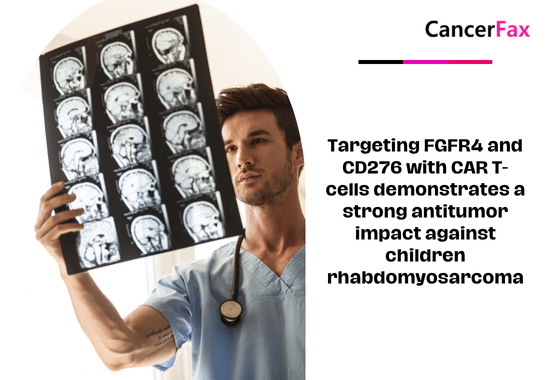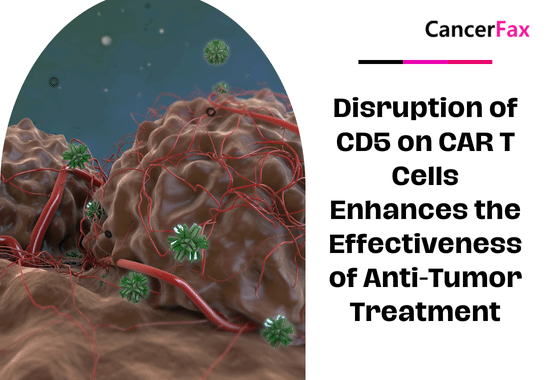Approved drugs by ASCO from 2005 to 2014
Since ASCO published its first clinical cancer progress report in 2005, it has witnessed solid and determined progress in the field of oncology in the past 10 years.
In the past 10 years, more than 60 anti-tumor drugs have been approved by the FDA (Figure 1). With the deepening understanding of tumor biology, scientists have developed a series of new molecular targeted drugs, and their advent has changed by thousands. The status of tens of thousands of cancer patients who are difficult to treat.
Such new drugs can target specific molecules or molecular clusters necessary for tumor cell growth, survival or spread.
Ten years ago, the National Institutes of Health launched the TCGA project, which became the earliest and most extensive of such projects. To date, the TCGA research network has outlined a complete molecular map of 10 different cancer types.
Today, TCGA and other high-throughput sequencing projects continue to explore valuable information that will help improve patient prognosis through a series of pathways. It is possible for patients to choose the most suitable treatment method. The study also found new cancer driver gene abnormalities. These genes may become targets for new drugs.
After decades of steady development, the field of antibody immunotherapy has finally ushered in the long-awaited major success in recent years. It first occurred in the treatment of advanced melanoma, followed by a series of other cancer types, including lung cancer. Common types have also made progress.
The population of patients who previously lacked effective treatments had significantly prolonged survival after treatment with new therapies. A recent long-term study suggested that antibody immunotherapy still has an effect on tumor growth after many years of treatment.
Another type of immunotherapy is committed to reorganizing its own immune cells to attack tumor cells. It also performs well for specific blood tumors and a series of solid tumors.
The first cancer vaccine in the past decade has also been released (cervical cancer Gardasil vaccine). Experiments to explore other types of cancer vaccines are also underway.
Finally, large-scale screening studies have brought new and important evidence that it can advance screening practices for some common cancers such as lung cancer, breast cancer, and prostate cancer.
Rapid development of targeted therapy in cancer treatment
In the last ten years, we have seen a steady and rapid increase in the number of new targeted therapeutic drugs approved by the FDA, far exceeding the speed of development of new chemotherapy drugs (Figure 2).
During this period, about 40 new targeted drugs were approved, many of which changed the traditional treatment model and greatly improved the prognosis of many cancer patients.
We first introduce anti-angiogenesis inhibitors, which are a class of drugs designed to reduce neovascularization of tumors and have become successful treatments for many advanced and aggressive cancers.
The first drug approved by the FDA is bevacizumab, which was approved for advanced colorectal cancer in 2004 and has since been used in certain lung, kidney, ovarian, and brain tumors.
Subsequently, other angiogenesis inhibitor drugs such as axitinib, carbotinib, pazopanib, rigefenib, sorafenib, sunitinib, vandetanib, and abecept were successively Approved for the treatment of advanced kidney cancer, pancreatic cancer, colorectal cancer, thyroid cancer, and gastrointestinal stromal tumors and sarcomas.
EGFR inhibitors: targeting key signaling pathways
Tumors and Blood Vessels
Another major class of targeted drugs is designed to disrupt critical signaling pathways in cells, especially the signaling network that controls the growth of cancer cells. One of these pathways is controlled by the EGFR protein.
The first EGFR drug was gefitinib, which was approved for the treatment of NSCLC in 2003. Two years later, the FDA approved the second EGFR drug cetuximab for the treatment of advanced colorectal cancer, and another similar drug panitumumab was also approved in 2006.
However, in 2008, new research revealed that colorectal cancer patients with KRAS mutations developed resistance to cetuximab and panitumumab. This discovery requires routine testing of KRAS gene mutations to ensure that patients can benefit from the above two drug treatments, while protecting other patients from the adverse effects of unhelpful treatment.
In 2004 and 2005, the FDA approved the EGFR inhibitor erlotinib for the treatment of NSCLC and advanced pancreatic cancer. Recently, in 2013, the US FDA approved afatinib for the treatment of advanced NSCLC patients with specific mutations in the EGFR gene. Other EGFR targeted drugs are undergoing clinical trials.
New HER2 therapy brings continuous breakthrough in breast cancer treatment
About 15 years ago, scientists discovered the first treatment for tumor tissue that overexpresses human epidermal growth factor receptor 2 (HER2). About 15% to 20% of breast cancer patients carry the above genetic abnormalities (HER2-positive cancer). Similar to EGFR of the same family, HER2 can also promote the growth of cancer cells. Since then, four HER2-targeted drugs have been born, all of which can improve the survival of patients with HER2-positive breast cancer.
The first HER2 drug, trastuzumab, when used in combination with chemotherapy can greatly improve the survival of women with advanced HER2-positive breast cancer. In 2006, trastuzumab was approved for patients with early HER2-positive breast cancer in order to reduce the risk of recurrence after surgery.
Recently, an important study found that the double hit against HER2 was more effective than trastuzumab monotherapy, which led to the FDA approval of the second HER2 drug Pertuzumab in combination with trastuzumab in 2012 Monoclonal antibody is used in patients with advanced HER2-positive breast cancer, and then approved for the treatment of early disease in 2013.
In the same year, trastuzumab-emtansine (T-DM1) (trastuzumab coupled with a chemotherapeutic drug) was also approved. This combination treatment is not only more effective than single drug treatment, but also allows the drug to be accurately targeted to breast cancer cells, thereby reducing the adverse effects on healthy tissue cells. For HER2-positive breast cancer that has deteriorated after multiple previous treatments, this is the optimal treatment plan.
The fourth HER2 drug, lapatinib, was approved in 2007. When used in combination with aromatase inhibitor drugs, it can effectively treat HER2-positive and hormonal receptor-positive / HER2-positive metastatic breast cancer.
Drugs targeting multiple molecular pathways: promising prospects
Researchers continue to find that many cancer drugs can block multiple molecular targets or pathways at the same time, which makes them a more effective anti-cancer weapon. For example, vandetanib (approved for the treatment of thyroid cancer in 2011) can Block EGFR, VEGFR (protein involved in tumor blood vessel growth) and RET.
The colorectal cancer drug gefitinib (approved in 2012) blocks 6 different cancer pathways: VEGFR1-3, TIE2, PDGFR, FGFR, KIT, and RET.
New targets and new drugs in the treatment of cancer
The prospec
ts for new drug development are extremely attractive. In 2013 and 2014, the FDA approved Trametinib and Dalafenib, two drugs that can be used for the treatment of specific mutant melanoma of the BRAF gene, which controls the MEK pathway.
Crizotinib (approved in 2013) can target lung cancer and childhood cancer with ALK gene mutation. Tisirolimus (approved in 2007) and everolimus (approved in 2012) block the mTOR pathway, which can control the growth of several cancers, including breast cancer, pancreatic cancer, and kidney cancer.
Everolimus is the first effective targeted drug for HER2-negative breast cancer, this type accounts for most of breast cancer. Everolimus combined with aromatase inhibitor drugs is approved for hormone receptor positive and HER2 negative postmenopausal advanced breast cancer patients.
Nilotinib (approved in 2007) and dasatinib (approved in 2010) can target BCR-ABL, a specific protein found only in certain types of leukemia.
Welcome to the era of immunotherapy
Scientists have known that the immune system is a powerful force against cancer as early as a hundred years ago. But it was not until the last decade that immunotherapy really started to revolutionize cancer treatment. Progress has been made in several directions from oral medications to cell-based treatments tailored to each patient.
Stimulate the immune system to fight cancer
T cells play an important role in fighting cancer. In 2011, the FDA approved ipilimumab as a breakthrough treatment for melanoma. Ipilimumab is an immune drug that targets the CTLA-4 protein of T cells, which can inhibit the killing effect of T cells.
In clinical trials, patients will experience rapid and obvious tumor regression, and they will still benefit after a long time after treatment ends (for some patients it may last for several years).
Since then, some so-called immune checkpoint inhibitor drugs have been developed, especially some drugs can target the PD-1 / PD-L1 pathway, which helps tumors escape the immune system.
The FDA awarded the PD-1 blocker drugs nivolumab and MK-3475 breakthrough therapy titles. In recent early clinical trials on melanoma, both have shown unprecedentedly good efficacy (nivolumab can also be effectively used in kidney cancer And lung cancer treatment).
In September 2014, Mk-3475 (pembrolizumab) became the first PD-1 targeted drug approved by the FDA. PD-1 targeted drug MPDL3280A also showed an effect against advanced melanoma in clinical trials.
Recent studies suggest that the combined use of different checkpoint inhibitor drugs or a combination of immune-activated drugs such as interferon, interleukin and other checkpoint inhibitor drugs may further improve the patient’s benefit.
Patients and survivors have significantly improved quality of life
In the past decade, research has discovered a series of new treatments that can improve the quality of life of patients at every step from diagnosis to survival. In addition, emphasizing the integration of early palliative care and active treatment will help many patients, especially to promote advanced patients to live a better life.
Relieve cancer-related adverse effects
New strategies aimed at controlling adverse effects can greatly improve the quality of life of patients, both during and after treatment. For example, two independent studies have shown that the antidepressant duloxetine and the antipsychotic olanzapine are effective drugs for preventing two common adverse effects such as chemotherapy peripheral neuropathy and nausea.
Another study found a treatment for common symptoms that did not attract enough attention—depression and pain. More and more evidence confirms the effectiveness of non-medical methods such as acupuncture and yoga to improve the physical and mental health of patients and survivors. Possible benefits include alleviating fatigue and pain, improving quality of life, and reducing medication use.
Combining cancer treatment with early palliative care
A key clinical trial in 2010 confirmed that the integration of early palliative treatment during treatment can significantly improve the quality of life and prolong survival of patients with advanced lung cancer compared with single active treatment. In addition, patients who have received early palliative care are unlikely to receive high-intensity active care such as resuscitation at the end of life.
The study triggered a new wave of palliative care for advanced patients. The study also mentioned the recommendation of the interim guidelines issued by ASCO in 2012: Any patient with metastatic cancer or high symptom burden can be accompanied by palliative treatment in early standard cancer treatment.
Common drugs that reduce cancer risk
A large number of clinical trials have shown that some commonly used drugs may have important effects on cancer prevention. For example, analysis of data from nearly 50 epidemiological studies shows that oral contraceptives can reduce the risk of ovarian cancer by 20% every 5 years. This reduction effect persists within 30 years of termination of the drug.
Further research found that taking aspirin daily can reduce the risk of colorectal cancer. However, due to stomach bleeding and other risks, it is not recommended to routinely use aspirin as a cancer prevention method. The next step of the study will also explore anti-inflammatory drugs in cancer prevention and The role of treatment.

